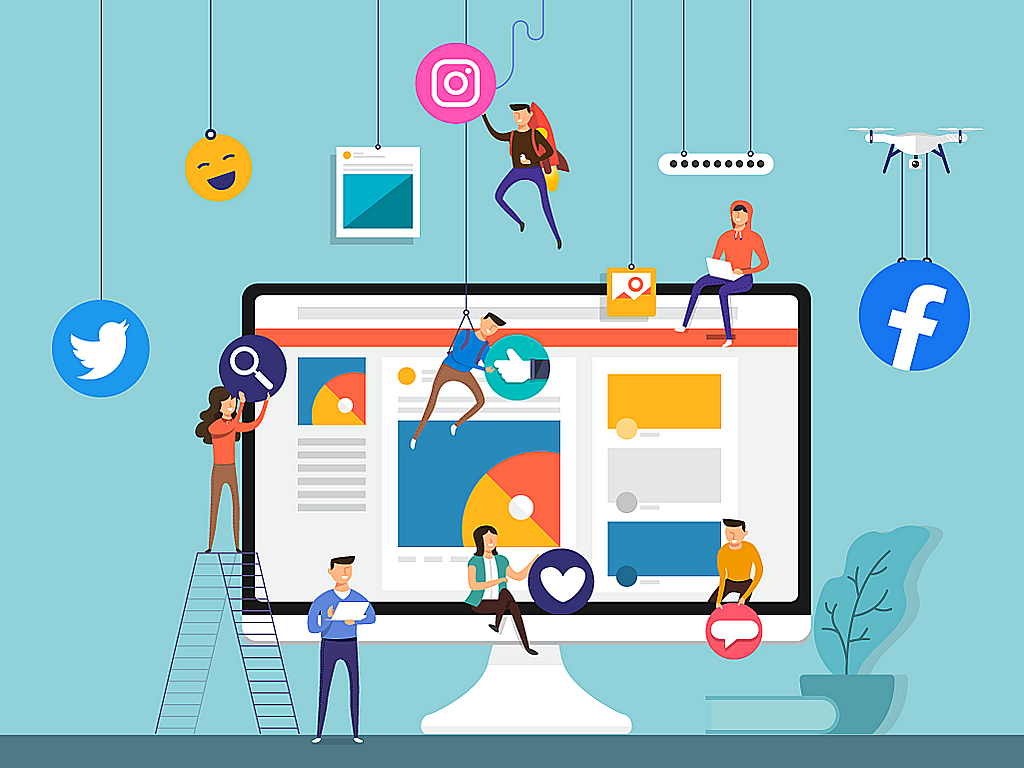visual content in social media marketing
Visual content is crucial in social media marketing for several reasons, as it plays a key role in capturing attention, conveying messages effectively, and driving engagement. Here are some of the main reasons why visual content is important:

1. Grabs Attention Quickly
- Short Attention Span: On social media, users scroll through their feeds rapidly, and visuals like images, videos, infographics, and GIFs capture their attention faster than text alone. People are more likely to stop and engage with a post that contains striking visual elements.
- Visuals Stand Out: In a sea of text-heavy content, images and videos stand out and attract more views, making it easier to gain visibility.
2. Increases Engagement
- Higher Engagement Rates: Posts with visuals (especially videos) typically see higher engagement rates in terms of likes, comments, shares, and clicks. Studies have shown that content with visuals receives more social media interactions compared to posts without them.
- Shareability: People are more likely to share content that includes engaging visuals, which helps to expand your reach and brand visibility.
3. Enhances Brand Recognition
- Consistent Branding: Consistent use of brand colors, logos, and design styles in visual content strengthens brand identity. Over time, this makes your brand instantly recognizable to your audience, even without a logo or name.
- Emotional Connection: Visuals can evoke emotions more effectively than words alone. Whether it’s through a compelling photo, a thoughtful design, or a heartwarming video, visuals help create a deeper emotional connection with your audience.
4. Improves Message Retention
- Visual Learning: People tend to retain information better when it’s paired with visuals. Studies have shown that the human brain processes images 60,000 times faster than text, meaning visual content is easier to absorb and remember.
- Complex Ideas Made Simple: Visuals such as infographics, charts, and diagrams can break down complex information into digestible, easy-to-understand formats.
5. Drives Conversions
- Product Demonstrations: High-quality images and videos of products or services can showcase features, benefits, and use cases effectively, leading to higher conversion rates. Consumers are more likely to make a purchase if they can visually see the value of a product.
- Call to Action (CTA): Visuals can be used strategically to highlight calls to action, encouraging users to take the next step, whether that’s signing up, making a purchase, or visiting a website.
6. Boosts SEO and Social Media Algorithm Performance
- Increased Visibility: Social media platforms like Instagram, Facebook, and TikTok prioritize visual content in their algorithms. Posts with high-quality images, videos, or other visual media are more likely to be shown to a wider audience, improving overall visibility.
- SEO Benefits: On websites and blogs, visuals like optimized images, infographics, and videos can improve search engine rankings, as search engines like Google consider user engagement metrics that visuals help to boost.
7. Supports Storytelling
- Narrative Engagement: Visual content is key for telling compelling stories. Whether it’s through a series of images, a video story, or a live stream, visuals help convey your brand’s narrative in a more impactful way than text alone.
- Visual Consistency: When used consistently across different platforms, visual storytelling creates a cohesive experience, helping to strengthen your brand’s overall message and identity.
8. Increases Mobile Engagement
- Mobile-Friendly Content: Visual content is particularly effective on mobile devices, where users tend to consume more content. Images, short videos, and infographics are easier to digest on small screens, leading to higher engagement levels compared to text-heavy posts.
9. Improves Accessibility
- Inclusive Content: Visual content can be designed to be more inclusive. For example, alt text for images can make your content accessible to visually impaired users, while captions on videos make your content more accessible to those who are deaf or hard of hearing.
10. Fosters Community Building
- User-Generated Content (UGC): Visual content encourages users to share their own experiences with your brand through photos, videos, or stories. This user-generated content helps build a community around your brand and adds authenticity.
4o mini